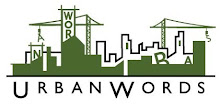 I’ve been reading Art and Architecture: A Place Between, by Jane Rendell, who’s a really interesting professor, based at the Barlett (Faculty of the Built Environment, UCL). She comes from an architecture/public art/ art writing background, and is interested in writing’s relationship to art, place and architecture.
I’ve been reading Art and Architecture: A Place Between, by Jane Rendell, who’s a really interesting professor, based at the Barlett (Faculty of the Built Environment, UCL). She comes from an architecture/public art/ art writing background, and is interested in writing’s relationship to art, place and architecture.“Like the Internet, books are public sites accessible to diverse audiences, but not usually regarded as ‘physical’ locations. However, it is important to recognise that these kinds of sites have specific formal limits and material qualities, for example the size and layout of words on a page, and that ‘surfing the net’ as well as reading a book. Horn’s work points towards how different texts, from the empirical account constructed through careful and systematic research to the more poetic reverie, can, by drawing attention to the spatial ways in which we read images and words, main texts and footnotes, produce critical spaces through the act of reading, asking us to question the relation of fact to fiction in the writing of a cultural history of a place.”
I haven’t quite processed this yet, but I’m really interested in the connection between text and space, and the idea of reading as a spatial activity.





